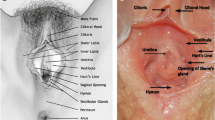Abstract
Purpose of Review
Goal was to review epidemiology, pathophysiology, and prevention of post-antibiotic Candida vulvovaginitis (VVC).
Recent Findings
Antibacterial therapy, whether systemic or locally applied to the vagina, represents the single most frequent and predictable cause or triggering mechanism of symptomatic vulvovaginal candidiasis (VVC). Such initiating mechanisms may precipitate sporadic or recurrent episodes of VVC. In spite of this widely recognized association, the exact mechanism whereby antibiotics of all classes cause acute exacerbation of symptomatic vaginal disease remains largely unstudied and therefore largely unknown. Pathophysiology is hypothesized to be reduction or alteration of vaginal microbiome restraints of yeast colonization, proliferation, and expression of virulence characteristics.
Summary
The predictable link between antibiotic use and post-antibiotic VVC affords practitioners an opportunity for timely intervention using selective, convenient antimycotics usually drugs but possibly probiotic measures. Indications and limitation of these steps are discussed.
Similar content being viewed by others
References
Sobel JD. Recurrent vulvovaginal candidiasis. Am J Obstet Gynecol. 2016;214:15–21.
Denning DW, Kneale M, Sobel JD, Rautemaa-Richardson R. Global burden of recurrent vulvovaginal candidiasis. A. Systematic review. Lancet Infect Dis. 2018;18:339–47.
Marchaim D, Lemanek L, Bheemreddy S, Kaye KS, Sobel JD. Fluconazole-resistant, Candida albicans vulvovaginitis. Obstet Gynecol. 2012;120(6):1407–14.
lj C. Vaginal moniliasis after tetracycline therapy: the effects of amphotericin B. Am J Obstet Gynecol. 1964;90:374–8.
Oriel JD, Waterworth PM. Effects of minocycline and tetracycline on the vaginal yeast flora. J Clin Pathol. 1975;28:403–6.
Iravani A, Richard GA. Amoxicillin-clavulanic acid versus Cefaclor in the treatment of urinary tract infections and their effects on the urogenital and rectal flora. Antimicrob Ag Chemo. 1986;29:107–9.
Bluestein D, Rutledge C, Lumsden L. Predicting the occurrence of antibiotic-induced candidal vaginitis (AICV). Fam Pract Res J. 1991;11:319–26.
MacDonald TM, Beardon PH, McGilchrist MM, Duncan ID, McKendrick AD, McDevitt DG. The risks of symptomatic vaginal candidiasis after oral antibiotic therapy. Q J Med. 1993;86:419–24.
Geiger AM, Foxman B. Risk factors for vulvovaginal candidiasis: a case-control study among university students. Epidemiology. 1996;7:182–7.
Glover DD, Larsen B. Relationship of fungal vaginitis therapy to prior antibiotic exposure. Infect Dis Obstet Gyn. 2003;11:157–60.
Spinillo A, Capuzzo E, Acciano A, Santolo AD, Zara F. Effect of antibiotic use on the prevalence of symptomatic vulvovaginal candidiasis. Am J Obstet Gynecol. 1999;180:14–7.
Menday AP. Symptomatic vaginal candidiasis after pivmecillinam and norfloxacin treatment of acute uncomplicated lower urinary tract infection. Interna J Antimicrob Ag. 2002;20:297–300.
Pirotta MV, Gunn JM, Chondros P. “Not thrush again!” Women’s experience of post-antibiotic vulvovaginitis. General Practice In Action. 2003;179:43–6.
Pirotta M, Gunn J, Chondros P, Grover S, O’Malley P, Hurley S, et al. Effect of lactobacillus in preventing post-antibiotic vulvovaginal candidiasis: a randomized controlled trial. BMJ. 2004;27:1–5.
Pirotta MV, Garland SM. Genital Candida species detected in samples from women in Melbourne, Australia, before and after treatment with antibiotics. J Clin Micro. 2006;44:3213–7.
Tabrizi SN, Pirotta MV, Rudland E, Garland SM. Detection of Candida species by PCR in self-collected vaginal swabs of women after taking antibiotics. Mycoses. 2006;49:523–4.
Xu J, Schwartz K, Bartoces M, Monsur J, Severson RK, Sobel JD. Effect of antibiotics on vulvovaginal candidiasis: a MetroNet study. J Am Board Fam Med. 2008;21:261–8.
Woods JW, Manning IH Jr, Patterson CN. Monilial infections complicating the therapeutic use of antibiotics. J Am Med Assoc. 1951;145(4):207–11.
Miller CP. New problems in the treatment of infectious diseases. Ann Intern Med. 1951;35(4):763–70.
Waterworth PM. The effect of minocycline on Candida albicans. J Clin Pathol. 1974;27:269–72.
Glover DD, Larsen B. Longitudinal investigation of Candida vaginitis in pregnancy: role of superimposed antibiotic use. Obstet Gynecol. 1998;91:115–8.
McVay LV Jr, Srunt DH. A study of moniliasis in aureomycin therapy. Proc Soc Exp Biol Med. 1951;78(3):759–61.
Moore M. In vivo and in vitro effect of aureomycin hydrochloride on Syringospora (Monilia, Candida) albicans. J Lab Clin Med. 1951;37(5):703–12.
Huppert M, MacPherson DA, Cazin J. Pathogenesis of Candida Albicans infection following antibiotic therapy. Department of Bacteriology and Immunology, University of North Carolina School of Medicine. 1952;65:171–6.
Drell T, Lillsaar T, Tummeleht L, Simm J, Aaspõllu A, Väin E, et al. Characterization of the vaginal micro- and mycobiome in asymptomatic reproductive-age Estonian women. PLoS One. 2013;8(1):e54379. https://doi.org/10.1371/journal.pone.0054379.
Greenbaum S, Greenbaum G, Moran-Gilad J, Weintraub A. Ecological dynamics of the vaginal microbiome in relation to health and disease. Am J Obstet Gyn. 2019;220:324–36.
Agnew KJ, Hillier SL. The effect of treatment regimens for vaginitis and cervicitis on vaginal colonization by lactobacilli. Sex Transm Dis. 1995 Sep-Oct;22(5):269–73.
Sobel JD, Chaim W. Vaginal microbiology of women with acute recurrent vulvovaginal candidiasis. J Clin Microbiol. 1996;34(10):2497–9.
St H, Hillier SL, Benedetti J, et al. Hydrogen peroxide-producing lactobacilli and acquisition of vaginal infection. J Infect Dis. 1996;174:1058–63.
Chetwin E, Manhanzva MT, Abrahams AG, Froissart R, Gamieldien H, Jaspan H, et al. Antimicrobial and inflammatory properties of South African clinical Lactobacillus isolates and vaginal probiotics. Sci Rep. 2019;9:1917.
Nichols RG, Peters JM, Patterson AD. Interplay between the host, the human microbiome, and drug metabolism. Hum Genomics. 2019;13(1):27.
Swidsinski A, Guschin A, Tang Q, Dörffel Y, Verstraelen H, Tertychnyy A, et al. Vulvovaginal candidiasis: histologic lesions are primarily polymicrobial and invasive and do not contain biofilms. Am J Obstet Gynecol. 2019 Jan;220(1):91.e1–8.
Author information
Authors and Affiliations
Corresponding author
Ethics declarations
Conflict of Interest
All authors declare no conflict of interest.
Human and Animal Rights and Informed Consent
This article does not contain any studies with human or animal subjects performed by any of the authors.
Additional information
Publisher’s Note
Springer Nature remains neutral with regard to jurisdictional claims in published maps and institutional affiliations.
This article is part of the Topical Collection on Female Genital Tract Infections
Rights and permissions
About this article
Cite this article
Shukla, A., Sobel, J.D. Vulvovaginitis Caused by Candida Species Following Antibiotic Exposure. Curr Infect Dis Rep 21, 44 (2019). https://doi.org/10.1007/s11908-019-0700-y
Published:
DOI: https://doi.org/10.1007/s11908-019-0700-y




